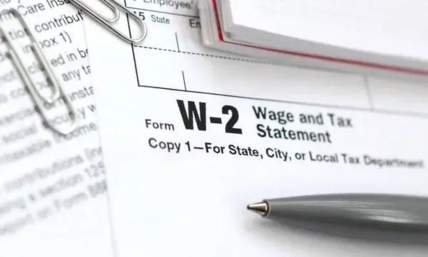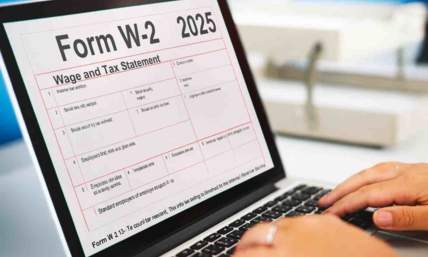How Is Labor Cost Calculated? Your Simple Guide
It’s important to know how to calculate labor costs correctly, no matter what you’re using them for. Whether you own a restaurant, small business, or construction business, you will need to ensure that you have your labor costs covered.
But where do you even start when it comes to labor costs? For such an important figure to determine, many people are still unsure on how to calculate it. Remember that labor costs are more than just the hourly rate that you’re paying your employees - it’s much more than that.
So, how do you calculate the labor costs? Let’s take a clear look at how you can calculate these to keep your business books correct.
Also read: Self Credit Builder Loan Review

What Do We Mean By Labor Cost?
Labor costs are your total expenses that you pay to every member of staff. However, this extends to more than just their hourly rate.
Labor costs include the gross wages for the employee, and any other payments made on their behalf. These additional costs could include social security taxes or medical insurance. Benefits would also contribute to the labor costs.
It’s important that business owners keep an eye on their labor costs to be able to compare them to the overall revenue. This ensures that your labor costs are not costing more than your business can afford. If this is the case, you should look at reducing your employee costs to ensure growth.
Also read: How To Remove Transworld Systems From Your Credit Report
Calculating Your Labor Costs
Before you can make the simple calculation of your labor costs, you will need to go through the process of factoring all of the expenses that relate to your employees. Once you have this information, this is the calculation that you will need to do:
Labor costs p/h = (gross pay + all other annual costs) / actual worked hours per annum.
You might not understand certain parts of this equation, so we’ve broken it down into easier bitesize pieces to ensure that you get the calculations right.
To put things into perspective, we’re going to be looking at fictional employee Brandon, who is paid an hourly rate with no exemptions to his pay. He works full time at a Californian company with 26 other employees. He is on a minimum wage rate of $13.
How would we go about calculating the labor costs for Brandon?
Step One: Gross Pay
Gross pay is the first thing you will need to know when figuring out your labor costs. The formula for gross pay is as follows:
Gross pay = gross hourly rate x number of hours worked within a pay period
For Brandon, we need to work out the total number of hours worked a year. Here is how to do that:
Total number of hours worked within a pay period = 40 hours every week x 52 weeks = 2080 hours.
So, let’s look back to the gross pay formula. For Brandon, it would now look like this:
$27,040 = $13 x 2080 hours
So, his gross pay is $27,040.
Also read: Lexington Law Credit Repair Review

Step Two: Actual Hours Worked
The overall hours worked within a year are 2080. However, it is very unlikely that an employee would actually work all of these hours. Most employees take days off throughout the year, so you have to take this into account, too.
Brandon took 12 days off in the year that we are considering. So, let’s see how many hours he didn’t work:
Working hours not taken = 12 days x 8 hours = 96 hours
Now all you have to do is subtract this from the total working hours, which would look like this:
Brandon’s actual working hours = total working hours per annum - working hours not taken
1984 hours = 2080 hours - 96 hours
So, this would mean that the total hours Brandon worked in the year was 1984, and this is how many hours you paid him for. It is important to work out the correct hours worked for your employees to prevent keeping inaccurate records of paying them throughout all of their time off.
Also read: Credit Strong Review
Step Three: Extra Annual Costs For Each Employee
So, you’ve determined how much money you’ve paid Brandon directly through employment, but now you have to determine whether there were any other costs that you spent on him during the year.
These will include things like healthcare benefits and taxes. Here are a few examples of other costs that you might be spending on your employees.
Benefits:
-
Retirement plans
-
Paid meals during work hours
-
Training programs
-
Health insurance, as well as add-on plans like dental or disability
-
Sick pay or vacation days
Taxes:
-
FICA (7.65%) - 6.2% social security and 1.45% Medicare
-
FUTA (6%, although exclusions may alter this)
-
Other taxes such as state and local unemployment
Other Expenses:
-
Overtime rates
-
Work tools and equipment
-
Workers’ compensation
When relating back to Brandon, this is how many additional costs he gets paid for him:
-
Benefits: health insurance - $3,120, various others - $1,200
-
Taxes: annual taxes - $2,348 (6.2% social security - $1676.48, 1.45% Medicare - $392.08, 0.6% FUTA on first $7,000 - $42, California state unemployment tax is 3.4% on first $7,000 - $238)
-
Other expenses - $500 work meals, $500 overtime pay
Overall, Brandon’s additional costs per year are $7,668.56. Bear in mind that you are paying a similar figure for everyone in your employment list, and the costs can vary greatly from person to person.
Step Four: Annual Payroll Cost
This is the total cost of labor for Brandon. Here is the formula:
Annual payroll cost = gross pay + extra annual costs
$34,708.56 = $27,040 + $7,668.56
The first figure is how much you are paying for Brandon every year to keep him in your employment list.
Also read: Fingerhut Credit Card Account Review

Summary
Now you can go back to the original labor cost formula and work out how much your employee is costing you per hour to ensure that your books are right.
For Brandon, the equation would look like this:
$17.50 per hour = $34,708.56 / 1984 hours
So, his hourly labor cost would be $17.50. We hope that you found this article interesting and it helped you to understand your company’s expenses a little better!
Pay stubs take only moments to generate, and they take roughly the same amount of time to misplace. If you receive regular paychecks from an employer, make sure to store them in a safe place.















